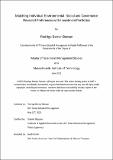Matching Individual Environmental, Social and Governance Revealed Preferences with Investment Portfolios
Author(s)
Berner Bensan, Rodrigo
DownloadThesis PDF (1.021Mb)
Advisor
Rigobon, Roberto
Terms of use
Metadata
Show full item recordAbstract
Environmental, Social, and Governance (ESG) investing has become increasingly popular in the last decade. However, portfolio managers face challenges in creating customized portfolios that align with investors' ESG preferences due to varying interpretations of sustainable investing and the lack of accurate information. This research shows that different ESG preferences can be measured and be represented in different investment portfolios. Using a web platform called ESG Machine, the individual ESG preferences and rationality were measured through a gamified experiment using the theory of Revealed Preferences. Then an adapted Constant Elasticity of Substitution utility function was calculated to estimate individuals’ preferences and substitution parameters between seven different ESG categories. Finally, using Robeco's SDG Scores, individuals’ portfolios and a "social portfolio" were created in different scenarios to perform the analysis.
The research found that individuals prioritize personal values and goals when making decisions, leading to significant variation in ESG preferences. Individuals tend to allocate resources in a way that maximizes their overall utility based on their preferences when stimulus as matching donations are presented, rather than following an equalitarian distribution approach between all the ESG categories. Furthermore, individuals tend to choose portfolios that are either equal or very similar to a social portfolio when prioritizing a small number of companies, even though their perceived utility differs significantly. Nevertheless, as the number of ESG categories considered in the utility function or the portfolio size increases, different individual preferences lead to different investment portfolios. Therefore, a single social ESG portfolio that accommodates the social preferences of all the individuals won’t necessarily represent a significant portion of the individuals.
Date issued
2023-06Department
Sloan School of ManagementPublisher
Massachusetts Institute of Technology